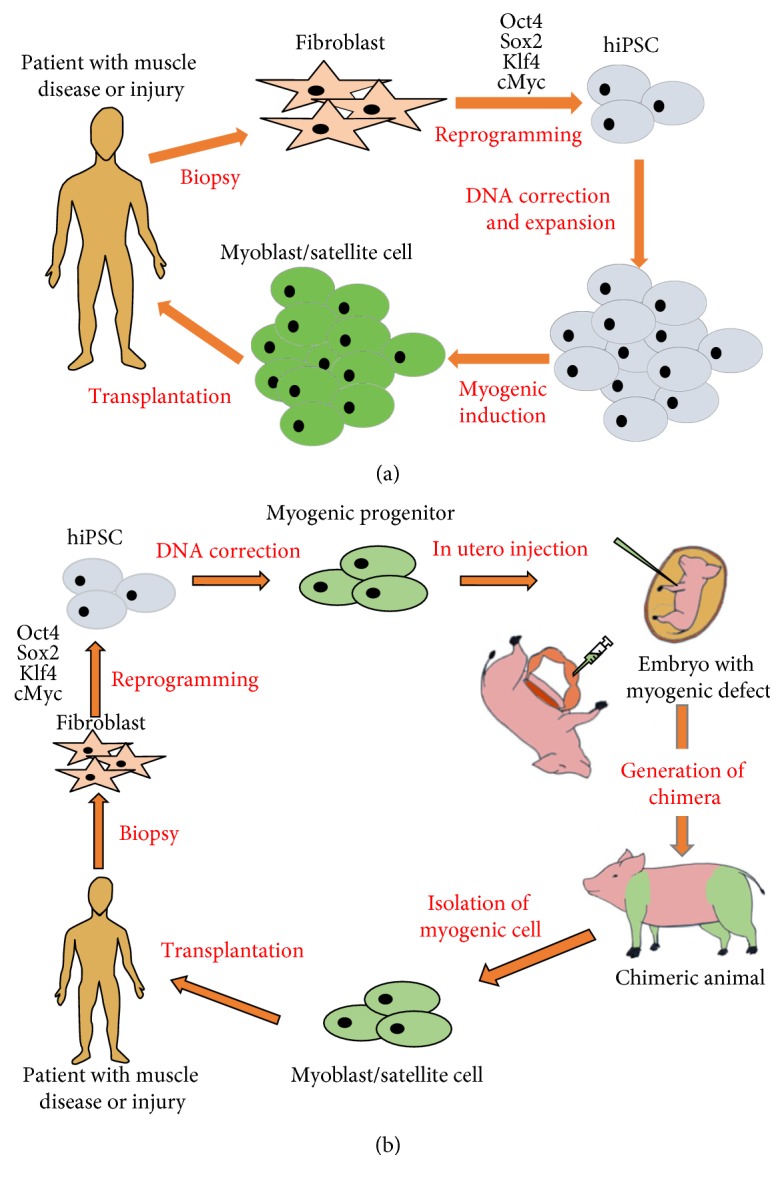Figure 1.

Current and new approaches for iPSC-derived stem cell transplantation for muscle diseases. (a) Patient-derived skin fibroblasts will be reprogramed into iPSCs by reprogramming factors. Patient-derived iPSCs will be used for DNA correction of dystrophin mutation by DNA-editing technologies. These corrected iPSCs will be induced to myogenic differentiation to generate myogenic progenitor cells which will be used for autologous cell therapy for patients suffering from muscle diseases and traumatic muscle injury and loss. (b) Patient-derived skin fibroblasts will be reprogramed into iPSCs by reprogramming factors. Patient-derived iPSCs will be used for DNA correction of dystrophin mutation by DNA-editing technologies. These corrected iPSCs will be used for myogenic progenitor cell induction followed by in utero injection into animal embryos carrying a defect of myogenic master genes such as MyoD, Myf5, and MRF4, allowing chimeric animal to develop human skeletal muscle. Chimeric animal-derived patient-specific myoblasts or satellite cells will be used for autologous cell therapy for muscle diseases and traumatic muscle injury and loss.
